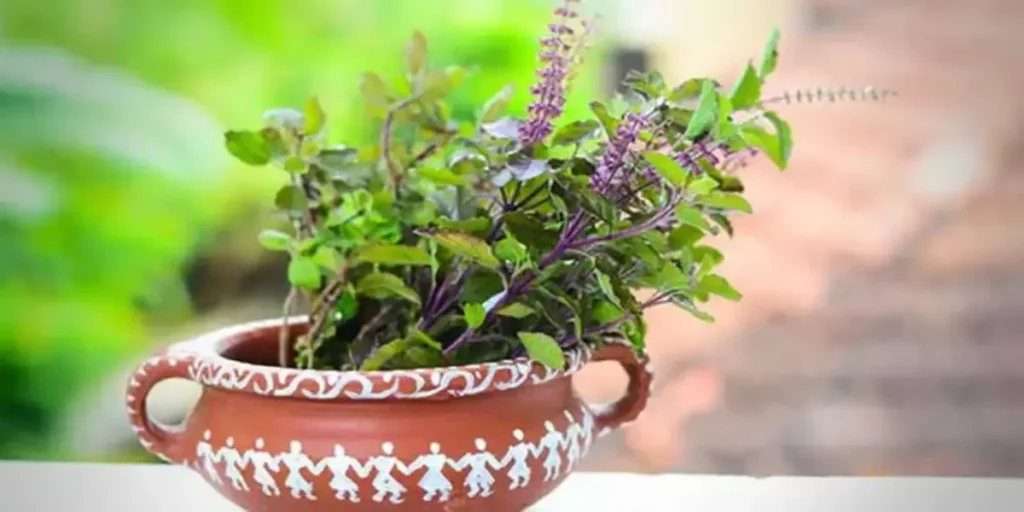Don’t Let Your Tulsi Plant Dry Up: 7 Mistakes to Avoid and Fixes That Work

Don’t Let Your Tulsi Plant Dry Up: 7 Mistakes to Avoid and Fixes That Work
A little attention to light, water, soil and space can bring your sacred plant back to life.
If your Tulsi plant at home looks dull, wilted, or refuses to grow, don’t worry, it can often be revived with a few mindful changes. Tulsi (Holy Basil) is a hardy, spiritual plant loved across Indian homes for its healing properties, but it does have specific care needs.
1. Not Enough Sunlight
Tulsi thrives in bright, direct sunlight for at least 4 hours daily, and appreciates some additional indirect light through the day. If it’s placed in a dark corner or behind grills, shift it to a sunnier spot, preferably a terrace, balcony, or any window ledge that receives direct sun. Lack of sunlight is one of the most common reasons the plant starts drooping or stops growing.
2. Watering Troubles
Too much water causes the roots to rot, while too little dries the plant out. Tulsi prefers evenly moist soil, not soggy, not dry. Touch the soil before watering. If it’s already damp, skip a day. Always use a pot with drainage holes to avoid waterlogging.
3. Poor Soil Quality
Tulsi loves light, well-draining, nutrient-rich soil. If the soil has become too compact, old, or doesn’t drain well, consider replacing it. You can repot the plant using a mix of garden soil, compost, and a bit of sand or cocopeat to help aeration.
4. Lack of Pruning
Tulsi benefits from regular pinching and pruning. It encourages bushier growth and prevents the plant from getting leggy. Remove dry or yellowing leaves, and pinch the top buds gently every couple of weeks to promote side shoots.
5. Pests on the Plant
If you notice small white insects under the leaves or holes in the foliage, your Tulsi may have a pest problem. Mix neem oil with water (around 5ml in 1 liter) and spray it on the leaves and soil every 3–4 days for a couple of weeks. This natural remedy helps keep most common pests away.
6. Cold Weather or Poor Airflow
Tulsi does not like extreme cold and can wilt if the weather turns chilly. Keep it in a slightly warmer, sheltered spot during winters. Also, remember that Tulsi loves fresh air. Cramped balconies with no ventilation can stunt its growth. In earlier times, the plant was always kept in the open ‘angan’ for this very reason. If possible, shift it to a spot with better airflow.
7. Outgrown Pot
If your Tulsi plant has been in the same pot for years and still struggles despite good care, the roots may have overgrown and entangled. In such cases, gently transfer it to a bigger pot with fresh soil, keeping the root ball intact.
Bringing It Back
With patience and regular care, your Tulsi can come back to life. Restore it to a healthy environment sunny, airy, and well-drained and in a few weeks, you’ll see new leaves sprouting and its gentle fragrance returning. Tulsi is a resilient plant and with the right conditions, it always gives back.












